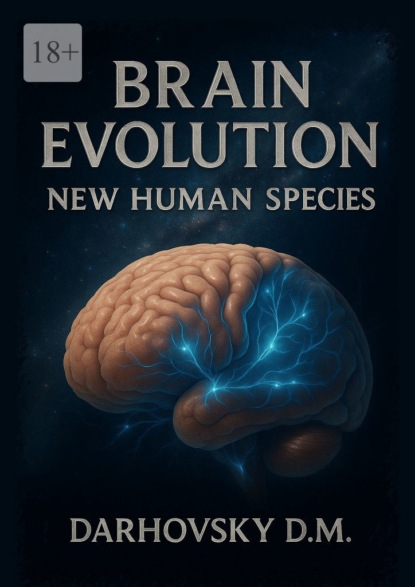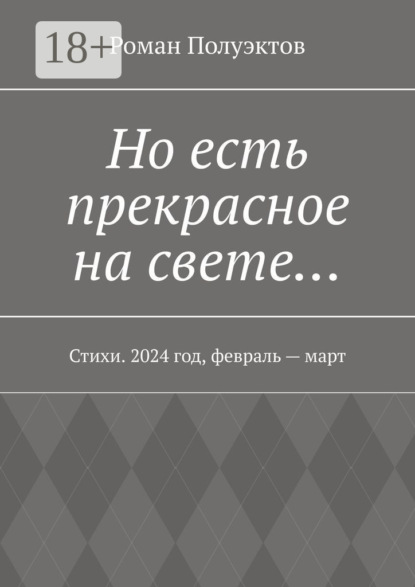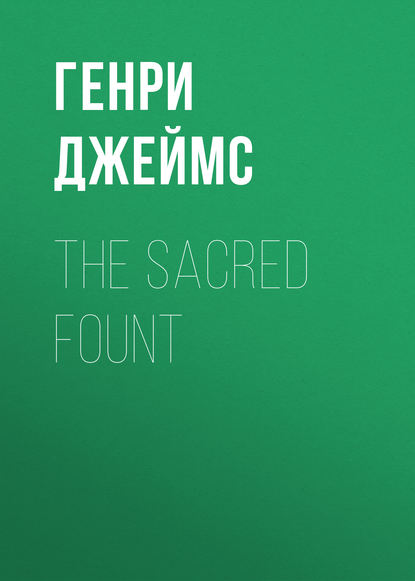- -
- 100%
- +
Phenomena such as mine can open up new horizons in understanding how the brain works and how it interacts with the body’s energy systems. Perhaps we are on the verge of discoveries that will allow us to use the energy potential of the brain more efficiently and for the benefit of humanity. Maybe in the future we will be able to control this energy as easily as we manage the electricity in our homes.
In the meantime, I continue my research, trying to understand and explain what was happening to me. Every day brings new data, each new experiment expands the boundaries of my understanding of the mysteries of the nature of human consciousness.
What I have experienced, although it seems very significant to me, is actually just one of many similar stories that thousands of people around the world are experiencing. My experience is not unique, and this is its true value – it is part of the overall human path to knowledge and self-knowledge.
What matters is not what happened to me, but the answers I was able to find in the process of searching for cognitive change. These answers, although they represent only a small part of everything that is to be learned, are the ones that deserve attention. They can serve as a key to unlocking the mysteries of human consciousness and potential, and perhaps help others in their own research and pursuit of development.
My and your time spent thinking and analyzing these experiences has not been wasted. Every moment, every experience, brings us new knowledge and understanding, which are stepping stones on the way to a deeper understanding of the foundations of life and its infinite possibilities.
So, let’s appreciate these moments of discovery and insight together, no matter how humble they may seem. After all, it is in them that true wisdom and opportunity for growth are hidden, which make our lives richer and fuller.
My research shows that humanity is only one link in a long chain of evolution on Earth. With each generation, our brain development accelerates, and we are on the cusp of new, astounding mental possibilities. If we imagine that evolution continues without artificial obstacles, we can expect that in the near future human intelligence will reach levels that seem fantastic to us today. Imagine a world where IQ is measured in thousands of points, and everyone’s memory becomes absolute. What discoveries, what new horizons of science and creation can be achieved under such conditions?
However, despite this, the modern social and economic system often hinders this natural course of development. We live in a world where progress and innovation can be stifled by short-term interests or fear of the unknown. This artificial inhibition can slow down our movement towards new levels of cognition, but it cannot stop it completely, because the nature of the mind inexorably strives for its own progress.
Nevertheless, we face a serious threat – the possibility that we will not live to see this transitional moment. Our rapid technological progress and population growth are leading to critical environmental pollution and depletion of natural resources. If we do not find a way to solve these problems, we risk destroying the very ecology that supports life on our planet, and ourselves along with it.
In this context, it becomes clear that our responsibility as a species is not only to develop our minds, but also to take care of our home, the Earth. We must strive for sustainable development that balances our needs with the needs of our planet. This could include the development of renewable energy, sustainable agriculture, the protection of biodiversity and, above all, global cooperation in tackling environmental challenges.
Thus, we stand at a crossroads of paths: one leads to a future full of intellectual achievement and harmony with nature, the other leads to possible decline and destruction. The choice is ours, and each of us has a role to play in determining the path that humanity will follow.
Over the past century, humanity has experienced unprecedented population growth, which has led to a significant increase in the consumption of natural resources and increased pressure on the ecosystems of our planet. This growth raises serious questions about the future sustainability and well-being of our species.
Many experts and sensible people are calling for a halt to population growth, but without the use of drastic or coercive measures. Instead, they offer solutions that respect natural processes and strive for balance. One such solution may be to increase the level of education and intelligence of the population, which, as research shows, directly affects demographic trends.
According to statistics, there is a correlation between IQ level and reproductive behavior. Regions with higher average IQs often show lower population growth rates. If it were possible to increase the average IQ level to 110 points, this could lead to a stabilization of the population, and reaching an average level of 150 points could contribute to the natural decline of the population.
This approach suggests that investment in education and the development of intellectual potential can be the key to solving many global problems, including the demographic issue. Educated people tend to make more informed choices about reproduction, careers and lifestyles, which in turn can lead to a more sustainable and balanced society.
Thus, improving the quality of education and access to it, as well as increasing the general level of intelligence of the population, can be effective tools for achieving a sustainable future. This will not only help to cope with demographic challenges, but also contribute to the formation of a more enlightened and responsible society capable of solving complex environmental and social problems.
In today’s world, where we are faced with an ever-increasing flow of information and increasingly complex challenges, the development of reason is becoming not only desirable, but also a necessary condition for the successful life of each person and the prosperity of society as a whole. This should be a major objective not only at the individual level, but also within the framework of global social policy.
Each of us, regardless of profession and social status, has a huge untapped potential. Professor William James, one of the founders of psychology, expressed the opinion that most people use only a small part of their mental abilities. His student Boris Sidis, developing this theory, showed by the example of the upbringing of his son William that the human brain is capable of much more than is generally believed in modern society. William Sidis, with his exceptional intelligence with an IQ estimated at 250—300 points, has become one of the brightest examples of human capabilities.
The opportunities for improving cognitive function and developing intelligence are unimaginably vast, and they can be realized through education, training, a healthy lifestyle, and continuous self-improvement.
Social policies and educational systems around the world should aim to provide everyone with opportunities to develop their mental abilities. This includes access to quality education, support for scientific research, creating an environment for creativity and innovation, and fostering a culture of lifelong learning.
This approach not only contributes to the personal growth and self-realization of each individual, but also ensures social progress, allowing humanity to better cope with global problems and open up new horizons in science and technology. Ultimately, developing the mind is key to creating a more conscious, just, and sustainable world.
Each of us, looking into the depths of our own consciousness, can ask ourselves: have I reached the limits of my intellectual capabilities? The sincere answer to this question will often be no, because deep inside we feel that we are capable of more, that our potential has not been exhausted.
This sense of untapped resources inspires us to find ways of self-development, which are certainly described in many books and studies. In this book, however, we will try to approach the question from a different angle, examining not so much the methods of development as the obstacles that stand in its way.
Often we ourselves, sometimes even unconsciously, put barriers on the way to our development. These can be fears, long-held beliefs, habits, social expectations, or even your own limiting thoughts. Getting rid of these factors can open the door to new levels of learning and self-improvement.
The human mind by its nature strives for the constant accumulation of knowledge, for an understanding of the world around and oneself in it. When we free ourselves from what limits us, we naturally seek to learn, to develop our abilities, and to expand new horizons.
In this book, we explore various aspects that can hinder our growth and development. We will consider psychological barriers, social constructs, emotional blocks, and many other factors that can inhibit our self-development. Through understanding and overcoming these obstacles, we can discover our true potential and begin to live a full, meaningful life filled with a constant pursuit of knowledge and self-improvement.
The human mind has a potential that borders on incredible, sometimes surprising capabilities. Our research and experience show that cultivating this potential through continuous self-development, spiritual practices, and overcoming internal barriers can usher in a new era for humanity.
This will allow us to better understand ourselves, achieve true harmony with nature and create conditions for prosperity on planet Earth. We are on the verge of great accomplishments if we can open the door and step into the world of limitless possibilities that lurk within each of us.
Chapter 1. Heritage of Humanity
After witnessing the unique powers of the mind, I was faced with a riddle that I could not solve with the help of modern scientific sources of knowledge. The Internet, with its inexhaustible amount of information, became the first assistant on this path, but, despite all the efforts, the answers that I was looking for could not be found, because the sensations could not be inserted into a search engine. I spent countless hours going through site after site, page after page, hoping to find something that might explain the unusual cognitive state I was able to experience.
And then, when I began to lose hope, I managed to find an ancient text that seemed to immerse me in the past, through the centuries that flew by in an instant. In a religious-spiritual treatise I found a mention of experiences strikingly similar to mine. A preacher who lived more than a thousand years ago described sensations that were so close to what I experienced that I couldn’t help but feel the connection that connects us through time.
This discovery was a major turning point for me. I realized that the answers I am looking for may not lie on the surface of modern scientific knowledge, but deeper in the wisdom and experience of our ancestors. It was the key that opened the doors to ancient teachings and mystical practices, to traditions and knowledge that have survived for thousands of years.
Having received a hint, the cherished key of knowledge to the doors of the wisdom of my ancestors, I continued my research with increased energy and hope. I immersed myself in the study of spiritual texts, philosophical works, and mystical treatises, looking for connections and understanding that could illuminate my path. For me, this process was not just a search for answers, but also a journey into the depths of human experience, where each discovery brought me closer to understanding how ancient knowledge can be applied in the modern world to unlock the potential of the phenomenal abilities of the mind. These ancient teachings, intertwined with modern scientific discoveries, provide us with a unique opportunity to look at the possibilities of the human mind from a new angle.
The state of consciousness I mentioned is often described in ancient treatises as moments of clarity and deep understanding, when inner boundaries dissolve and we feel connected to the entire universe. This state can be achieved in a variety of ways, and each one is unique, as is each person. But the essence remains the same: it is the desire for harmony, for a fuller and more conscious existence.
In the process of accumulating data, I was able to discover that such experiences are not just random moments or rare anomalies, they are part of the human experience, available to anyone who is willing to seek and discover.
The desire for enlightenment and understanding of the possibilities of the mind is universal, it is reflected in many cultures and traditions.
Through the centuries and civilizations, from ancient shamans to modern mystics, humanity has sought to understand the mysteries of consciousness and reason. This desire for self-knowledge and enlightenment has taken many forms and names, but it is always based on a single desire – to overcome the limitations of ordinary perception and reach a deeper level of awareness.
In this way, the description of the enlightened state of consciousness that I found in spiritual texts became for me a bridge connecting my personal experiences with the ancient wisdom of humanity. This allowed me to see that my experience was part of a larger spiritual path that people had been exploring for thousands of years.
Descriptions of those who have experienced a similar state of consciousness have been found in almost all religious and philosophical teachings of peoples around the world.
Throughout the history of mankind, people have constantly tried to comprehend their own nature of the capabilities of the mind, empirically creating practices of self-improvement, where the highest form of achievement is considered to be Enlightenment. Each nation of the world has its own name, but the description of an unusual state of consciousness for everyone, without exception, completely coincides.
Each of these traditions, although unique in its methods and practices, shares a common vision of enlightenment as a state in which a person achieves a new level of understanding of himself and the world. This is a state when we begin to perceive reality not through the prism of our limited beliefs, but see it as it really is – inexhaustibly rich and deeply interconnected.
Over the millennia of human history, there are so many descriptions of the phenomenon of the altered state of the brain that even one life is not enough to study them, so we will consider only the most unique of the teachings leading to enlightenment;
The state of enlightenment – Nirvana, which today is associated mainly with Buddhism, actually has much more ancient roots, going back centuries, to a time when even writing had not yet been invented. It was a world where wisdom and knowledge were passed down by word of mouth, from teacher to student, from generation to generation.

Nirvana is not just a concept or a philosophical term. It is a state of consciousness in which one attains liberation from the sufferings, desires, and illusions of the material world. It is a state of absolute calm, peace and harmony with the universe, which is described as the ultimate goal of spiritual development.
Interestingly, the concept of Nirvana, or similar states, is present in many Eastern religions and philosophical systems. In Brahmanism, it can be an understanding of Brahman, the absolute reality that is above all. In Hinduism, it is Moksha, liberation from the cycle of birth and death. In Taoism, it is the achievement of harmony with Tao, the eternal path of the universe. Even in Confucianism and Shintoism, although Nirvana is not explicitly mentioned, there are ideas about harmony with the natural order and the attainment of a higher spiritual state.
This suggests that the desire for enlightenment and understanding the depths of one’s own consciousness is a fundamental part of human nature. It is common to all cultures and civilizations, and each culture makes an invaluable contribution to the overall understanding of this unique state of consciousness.
The story of Nirvana, then, is the story of our own pursuit of self-discovery and self-realization. It is a path that each of us can take by examining both the outer teachings and the inner experience.

Advaita Vedanta is one of the most profound and influential philosophical teachings that originated in India. This teaching offers a unique perspective on the nature of reality and consciousness, offering a radically non-ambivalent view of the world and our place in it.
At the heart of Advaita Vedanta is the idea that true reality is the unity of existence, where there is no separation between the individual self and the universe. It is a state of Enlightenment when one realizes that one’s individual consciousness, the Atma, is inseparable from the absolute reality, Brahman. In this understanding, the world that we perceive through our senses and mind is an illusion or Maya created by our limited perceptions.
Caesar Teruel, speaking of the paradox of our thinking, emphasizes how beliefs shape our perception of reality. We tend to believe that we think, and our thoughts create a picture of the world in which we live. But Advaita Vedanta urges us to overcome this limited perception and see the world as it really is – one and indivisible.
This teaching offers a path to liberation from illusions and false ideas about oneself and the world. It teaches that realizing our true nature as a part of Brahman opens the way to deep inner peace, wisdom, and harmony. Understanding that we are not separate from the world, but an integral part of it, can radically change our experience of life.
Advaita Vedanta is not merely a philosophical teaching; It is a practical path to self-knowledge and enlightenment. It offers us the tools to break down the walls that we build between ourselves and reality, and to achieve a state in which we can live in full accordance with the true nature of our existence.

For many brought up in the traditions of Western logic and empiricism, the philosophy of Eastern spiritual teachings may seem incomprehensible. However, this is precisely where its unique value lies – it opens the door to other dimensions of understanding and perceiving the world. Islam’s contribution to world culture and science, especially through the spiritual teachings of Tasawwuf, is an example of such deep understanding.
Tasawwuf, or Sufism, with its practices aimed at achieving the state of Fana, offers a path to enlightenment that goes beyond rational thinking. It is a journey into the depths of the soul, where the personal “I” dissolves into the infinity of being, and a person gains a true understanding of his essence and connection with the entire universe.
Islam, which has enriched the world with knowledge in medicine, mathematics, chemistry and many other sciences, proves that spiritual development and scientific progress can go hand in hand. The Sufi understanding of the world, where every being and phenomenon is a reflection of a single divine principle, has inspired many scientists on their path to discovery.
It follows that Fana, as the highest stage of spiritual enlightenment in Islam, can be a key factor that inspires deep reflection and leads to the insight that underlies great scientific discoveries. This is a state when the mind is freed from the bonds of limited perception and begins to see the world in its true, multifaceted form.
In the light of these teachings, we can see that the path to enlightenment and understanding of ourselves and the world is not limited to one culture or religion. It is the universal aspiration of mankind for knowledge, wisdom and harmony with the world around us.

Throughout the history of mankind, religions have not only preserved spiritual traditions, but also contributed to the enlightenment and intellectual development of people. They were the custodians of knowledge and wisdom, helping generations to strive for a deeper understanding of the world and of themselves.
By reflecting on the past, we can see how ancient teachings such as Taoism influenced the development of civilizations and cultures. In China, where Taoism emerged between the 4th and 2nd centuries BCE, it offered a unique path to harmony with nature and understanding the laws of the universe. Taoism is not just a religious teaching; it is a philosophy of life that teaches us to live according to the Tao, the natural order of things.

According to Taoist philosophy, true bliss and enlightenment are not achieved through external actions or the pursuit of material goods. Rather, they are in deep self-knowledge and awareness of their connection to the cosmic order. Meditation and inner contemplation become the tools with which a person can reach the state of Nirvana, understanding that all life is a game of illusions, and that the true reality lies beyond the visible.
Taoism, like many other Eastern teachings, encourages us to seek wisdom not in the external world, but within ourselves. This is the way to return to the origins, to the true nature of our existence, where each person can find his place and the meaning of life.
By studying the history and philosophy of Taoism, we can see how ancient teachings continue to influence our modern understanding of the world and our place in it.

Japan, a country where ancient spiritual traditions are harmoniously intertwined with innovations, has given the world many outstanding scientific discoveries. This cannot be a mere coincidence, given the deep roots of Zen Buddhism in Japanese culture, whose teachings are aimed at achieving Enlightenment and developing the mind.
The etymology of the name Zen goes back to the Sanskrit-Pali term “dhyana/jhana” (Sanskrit. “concentration, contemplation”), meaning”(mental) concentration” – the Mind of the Buddha.
Zen, with its emphasis on meditation and contemplation, seeks to realize the true nature of the mind. Satori, or enlightenment in Zen, is a moment of immediate insight, when a person perceives reality as it is, without embellishment and illusions. It is a state of clarity and awareness, when all artificial boundaries between the self and the surrounding world disappear, and a person gains a deep understanding of his own essence.
This approach to life and learning can be key to developing the creative and analytical thinking necessary for scientific discovery. Perhaps it is because of their deep inner concentration and the ability to see beyond surface phenomena that Japanese scientists have been able to reach such heights in science.
Zen is not just a teaching or religion; This is a path to self-knowledge, which can lead to fundamental changes in the perception and understanding of the world. He teaches us that every moment is an opportunity for insight, for deep understanding, and for true knowledge.
By studying the impact of Zen Buddhism on the culture and scientific achievements of Japan, we can see how spiritual practices affect the development of intellectual abilities and how they can become a powerful tool for achieving breakthroughs in various fields of knowledge.
Master Engo “The great truth of Zen lives in everyone. Look inside and look for her there without needing anyone’s help.”

In Christianity, especially in the Orthodox tradition, Hesychasm represents the path to inner peace and understanding through prayer and solitude. This practice, which has its roots in the depths of centuries, was developed to help believers achieve deep spiritual enlightenment and closeness to God.






